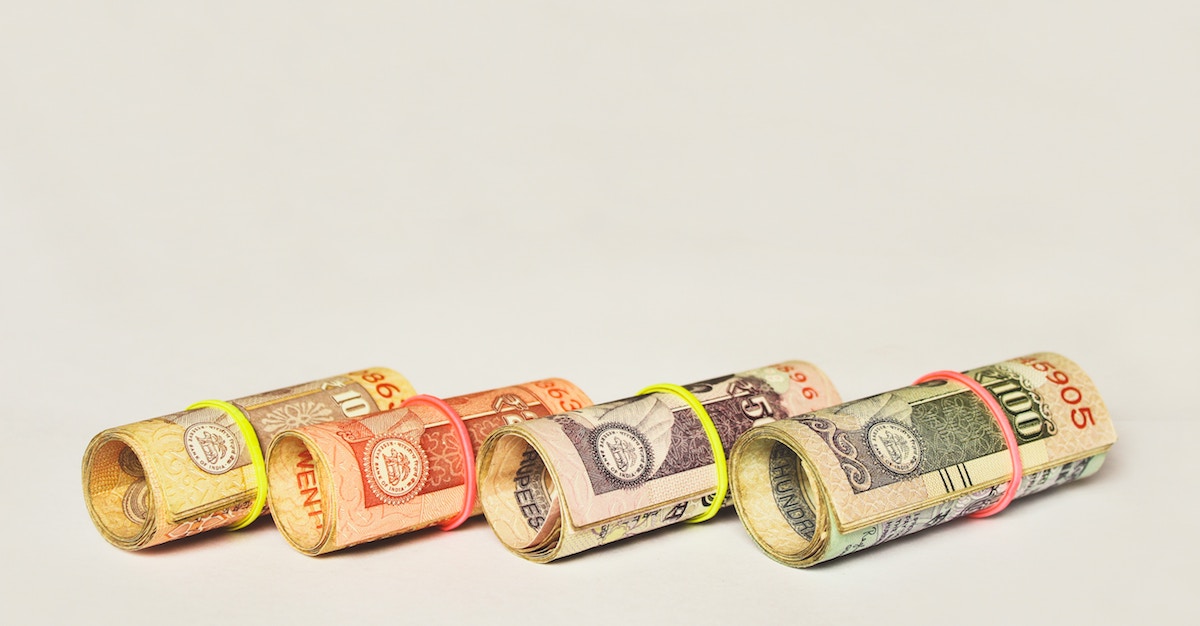
How Much Will You Make With a Master's in Financial Engineering?
Do you see a math puzzle when you look at [...]
Many people associate the role of creative director with advertising, but you’ll find these professionals everywhere creative people work. Ad agencies and digital marketing firms employ creative directors, for sure. But so too do software development companies, game development companies, video production companies, publishing companies, and entertainment companies. Creative directors are the idea generators who develop strategic visions and then hand those off to the art directors, copywriters, designers, developers, musicians, and other creatives who turn that vision into a product. Throughout the process, the creative director provides supervision and guidance.
It’s a senior role: creative directors are managers, not creatives. They may have a deep understanding of the creative process and may even be extremely creative themselves, but their responsibilities tend to revolve around project oversight, leadership, concept development, and human resources management.
In this article about creative director responsibilities, we cover:
Creating a comprehensive list of creative director responsibilities is nearly impossible because these professionals play different roles in different industries. In general, though, the creative director is the leader of the team responsible for developing a creative product (e.g., marketing campaign, video game, music video, websites, commercials, etc.). Their duties include:
| University and Program Name | Learn More |
|
Pepperdine University:
Online Master of Business Administration
|
|
|
Stevens Institute of Technology:
Online Master of Business Administration
|
|
|
The University of Tennessee:
Online Master of Business Administration
|
Creativity and an understanding of industry trends are absolutely must-haves for creative directors, but those aren’t the only skills they need. Handling the full list of creative director responsibilities takes solid business and management skills. Creative directors have to lead and inspire the professionals who do the actual design and copywriting work on ads and other marketing materials.
They also need highly-developed communication skills because it’s the creative director’s job to explain the client’s ideas and their own vision in a way that creatives can understand. They’re also responsible for helping the client understand the creative team’s choices and strategies.
Creative directors need technical skills, too. While a creative director might not do a lot of the actual writing and design for campaigns, they need to be comfortable with the software, tools, and applications involved in the creative process.
They should also have an eye for visual communication trends. Knowing what’s hot in advertising and design is important because clients and stakeholders aren’t going to want to be presented with the same old concepts.
Finally, creative directors must have a broad perspective. Directing creative projects involves working with professionals from many departments, not just artists and copywriters. Creative directors collaborate with people from finance, data analytics, and the c-suite.
Creative directors develop concepts; art directors manage the professionals who develop the look and feel of marketing materials and products based on those concepts. In other words, creative directors are big-picture thinkers, while art directors have to sweat the small stuff: should text be blue or green? Should the model smile or frown? An art director’s job is to execute the vision that the creative director has sold to a client or stakeholders.
That’s a generalized answer that doesn’t necessarily apply to every situation. Some firms use the titles creative director and art director interchangeably. Creative directors at other companies fulfill the same role as account managers, while the art directors develop ideas and creative strategies from start to finish. And the responsibilities of a creative director at a video game are, for obvious reasons, different from those of a creative director at a greeting card company.
Technically, yes, thanks to virtual meetings software, but it’s unusual to find full-time work-from-home positions for creative directors. That’s because this role involves frequent brainstorming sessions, client meetings, and hands-on management. Travel is often part of a creative director’s working life, too, because clients want to be sure that creative teams (whether from an agency or in-house) understand the unique value proposition of what’s being developed before they begin working on anything.
Because the list of creative director responsibilities is so long and so varied, landing this position requires the right mix of education and experience. According to Salary.com, about 68 percent of creative directors have a bachelor’s degree while only 16 percent have a master’s degree. Having a master’s degree in marketing or a marketing MBA—or even an MFA—will probably be an asset when you’re applying for creative director jobs, but most employers won’t expect or require you to have one.
There is no single best-educational-path for aspiring creative directors. At the bachelor’s degree level, you could major in:
While in school, make sure to take a relevant internship and to build a portfolio of creative work. It’s this practical experience that will help you get your first real job in your chosen field.
Advancing to a creative director position usually means getting a bachelor’s degree (and possibly a master’s degree), and then amassing seven to ten years of relevant professional experience in marketing, graphic design, or development. Some creative directors begin their careers as copywriters or social media marketers. They might then spend years creating email campaigns or even working in the digital sphere, doing things like UX design, web design, or multichannel marketing. That’s because working in these kinds of junior or entry-level creative jobs gives creative directors insight into what goes into the successful development of products or marketing campaigns. It’s also an opportunity for the aspiring creative director to explore different areas of an industry, from graphic design to intellectual property rules to creative strategies development.
From there, many paths lead to the creative director position. Some people advance in one area of marketing, moving from junior copywriter to copywriter to senior copywriter to content lead before becoming a creative director. Some people assume that creative directors have to rise through the ranks of graphic design, but plenty of creative directors have no talent for the artistic side of design. That’s creative director Daniel Scrivner’s story. “We went to art museums and I enjoyed art, but I was never interested in doing anything artistic,” he said in an interview on the Wake Blog. “I sucked at art class. In fact, I hated it so much, I refused to take it in high school. I wanted to solve real problems, hard problems, and use both sides of my brain to do it.”
Before becoming a creative director, you might work as a senior art director, senior graphic designer, or senior developer. In these roles, you’ll begin to oversee junior employees and handle accounts, projects, or campaigns. You’ll hone your leadership skills. The next stepping stone on the path to becoming a creative director will probably be the associate creative director position. In this role, you’ll begin doing less creative work and get a chance to flex your managerial muscles. You’ll also be responsible for making significant decisions without input from or the approval of the executive creative director.
Some marketers, programmers, and graphic designers choose to stop here because the associate creative director role still involves some creative work. Others keep going and eventually move into the higher-paying creative director position.
Because the list of creative director responsibilities is so long, this position tends to be a well-paid one. How much creative directors working at agencies and in-house for brands actually earn can vary significantly, however, because pay varies by industry.
The average creative director salary probably falls somewhere between $89,000 (PayScale’s figure) and $127,000 (Glassdoor’s figure), but the average can only tell you so much. Glassdoor’s salary data paints a more interesting picture because it’s possible to look at user-reported salary information by company. Some creative directors work for employers—usually large global firms—that pay these executives salaries well over $500,000. Then there are the creative directors working for small digital marketing agencies and regional development companies. These creative leads might do everything that their counterparts at big firms do, but they may earn $60,000 or less.
This isn’t a job for the meek or the proud. It’s fast-paced and relatively stressful, and the standards are subjective. Creative directors who second-guess themselves may not last very long, but at the same time, they also need to be humble enough to be open to other people’s opinions and perspectives. An amazing idea may leave a client feeling underwhelmed. Successful creative directors don’t take clients’ dislike or even their own failures personally.
It doesn’t matter how long you work in advertising, marketing, or development because it’s subjective. You have to be flexible because the creative ideas you love may not resonate with others. Even Phil Johnson, successful CEO of PJA Advertising & Marketing, has had to learn to deal with his own missteps. “I’ve passionately lobbied for work that hit the market with a big resounding thud,” he wrote of his experiences as creative director. “I’ve cringed at work that went on to produce excellent results for clients. I’ve rolled my eyes as creative teams have vehemently argued for work that I thought was just in bad taste. Knowing the good from the bad is no easy matter.”
It’s also not a job for anyone who wants to spend their days doing design work. Creative work usually falls relatively low on the list of creative director responsibilities. Most creative directors spend more time on creative direction than they do on design; this is, in the end, a management position. There’s room for imagination and creativity in this role. Still, leadership skills, interpersonal skills, communication skills, presentation skills, and the ability to inspire others may ultimately be the most important qualifications you can bring to the table when you become creative director.
(Updated on May 28, 2024)
Questions or feedback? Email editor@noodle.com

Do you see a math puzzle when you look at [...]

The term information technology covers a wide swath of computing [...]

A team of PR professionals shapes a company's voice, brand, [...]

A public relations manager oversees a team of PR professionals [...]

Advertising and promotions managers supervise the planning and preparation of [...]
Categorized as: Marketing & Advertising, Business & Management